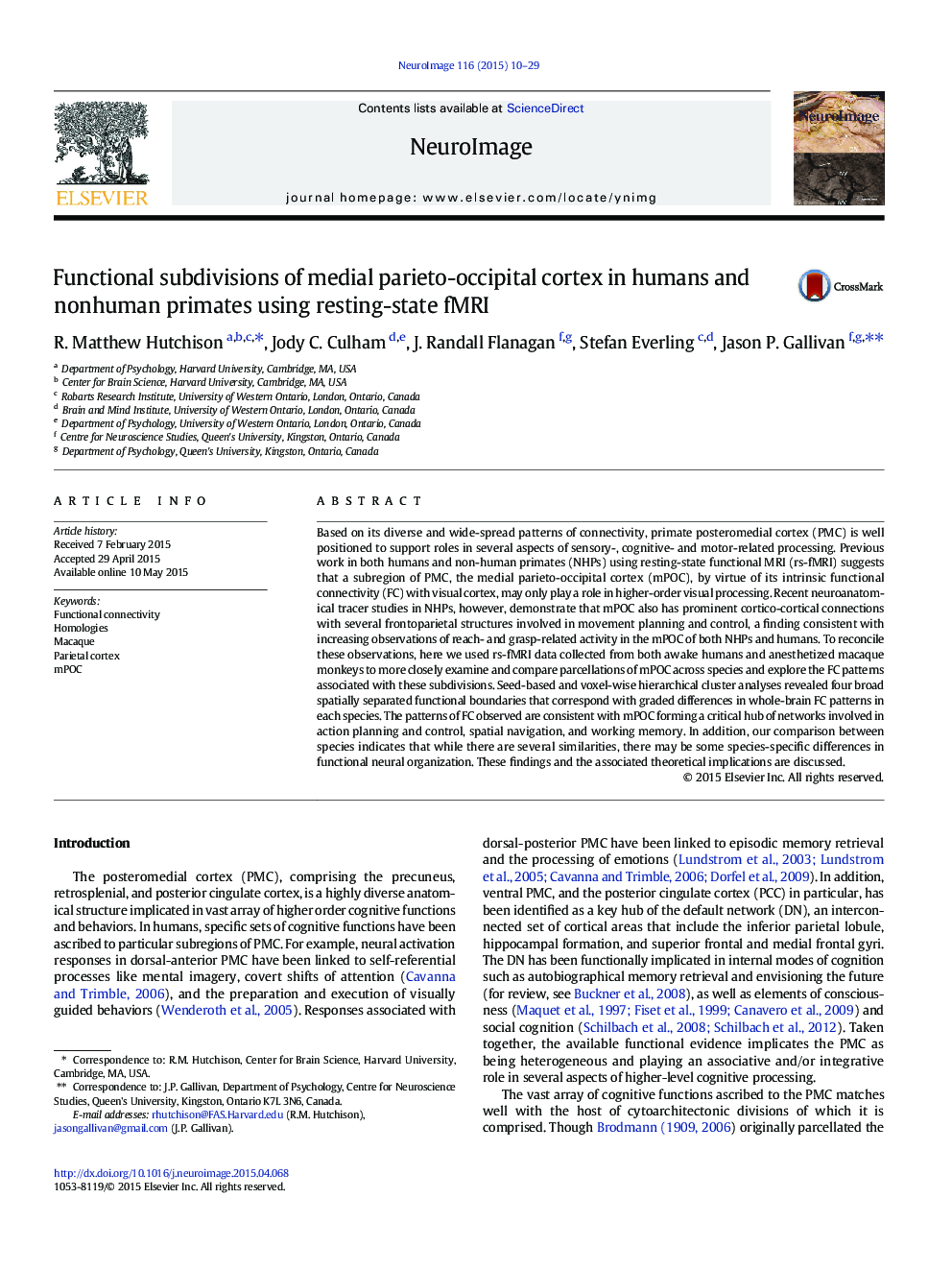| Article ID | Journal | Published Year | Pages | File Type |
|---|---|---|---|---|
| 6024876 | NeuroImage | 2015 | 20 Pages |
â¢rs-fMRI was used to examine divisions and functional connectivity of mPOC.â¢mPOC was clustered both dorsal-ventrally and posterior-anteriorly into 4 divisions.â¢Divisions in each species had distinctive functional connectivity profiles.â¢Macaques exhibited bilateral connectivity, whereas humans were strongly lateralized.â¢Divisions are implicated in action, navigation, and memory functions.
Based on its diverse and wide-spread patterns of connectivity, primate posteromedial cortex (PMC) is well positioned to support roles in several aspects of sensory-, cognitive- and motor-related processing. Previous work in both humans and non-human primates (NHPs) using resting-state functional MRI (rs-fMRI) suggests that a subregion of PMC, the medial parieto-occipital cortex (mPOC), by virtue of its intrinsic functional connectivity (FC) with visual cortex, may only play a role in higher-order visual processing. Recent neuroanatomical tracer studies in NHPs, however, demonstrate that mPOC also has prominent cortico-cortical connections with several frontoparietal structures involved in movement planning and control, a finding consistent with increasing observations of reach- and grasp-related activity in the mPOC of both NHPs and humans. To reconcile these observations, here we used rs-fMRI data collected from both awake humans and anesthetized macaque monkeys to more closely examine and compare parcellations of mPOC across species and explore the FC patterns associated with these subdivisions. Seed-based and voxel-wise hierarchical cluster analyses revealed four broad spatially separated functional boundaries that correspond with graded differences in whole-brain FC patterns in each species. The patterns of FC observed are consistent with mPOC forming a critical hub of networks involved in action planning and control, spatial navigation, and working memory. In addition, our comparison between species indicates that while there are several similarities, there may be some species-specific differences in functional neural organization. These findings and the associated theoretical implications are discussed.
